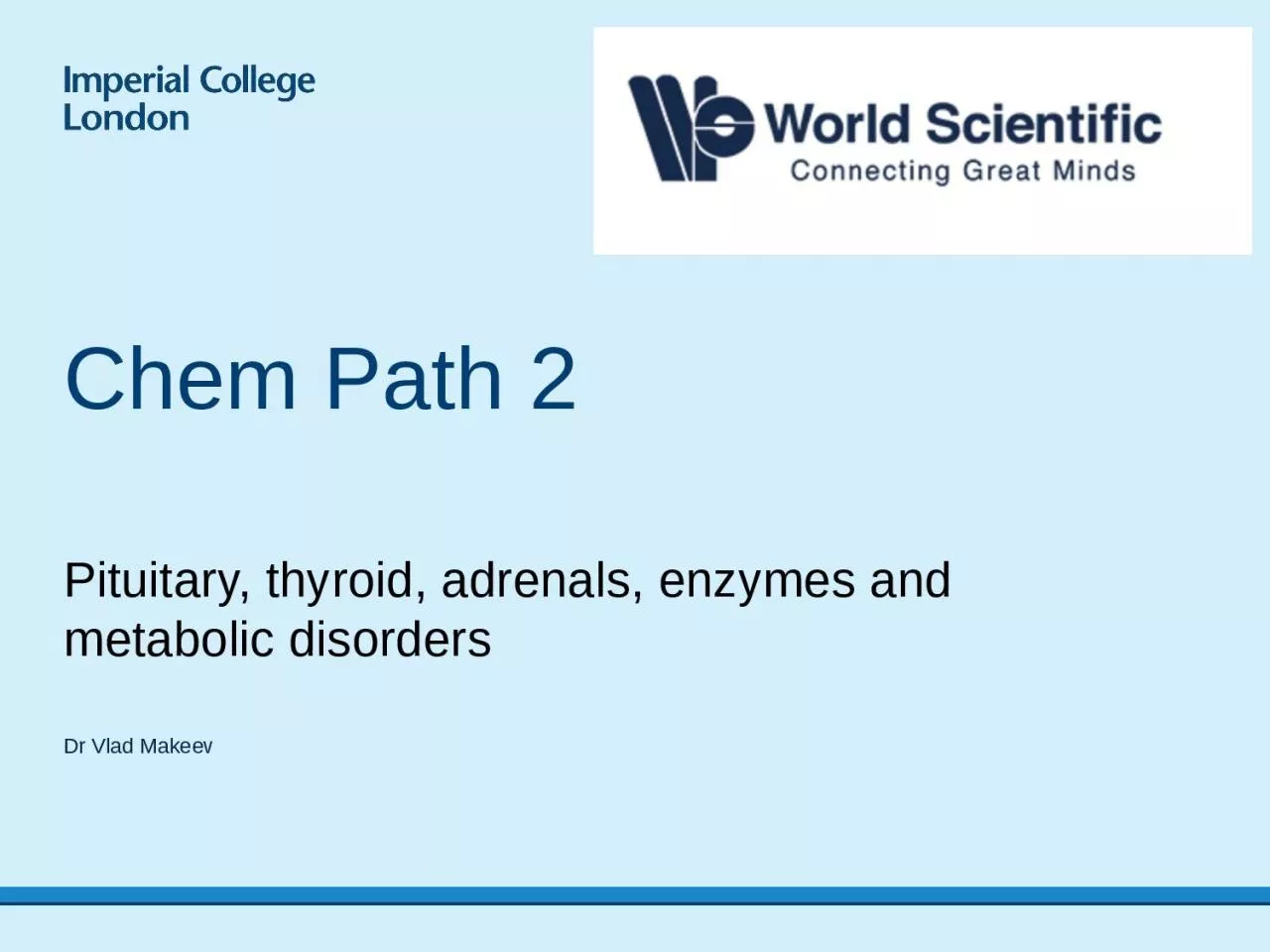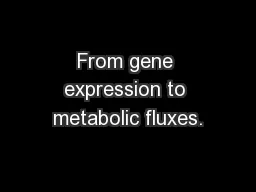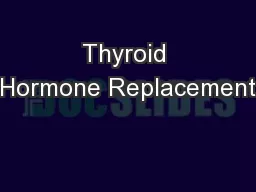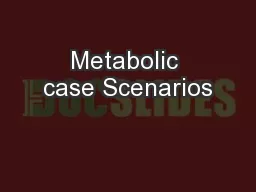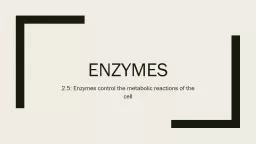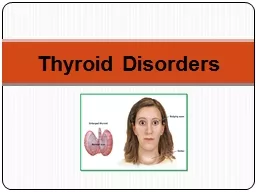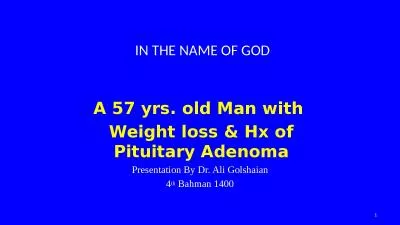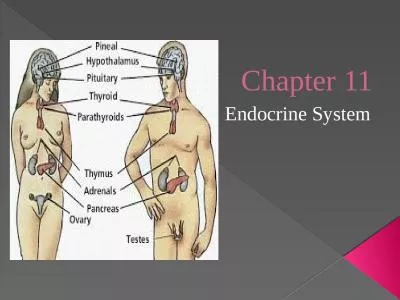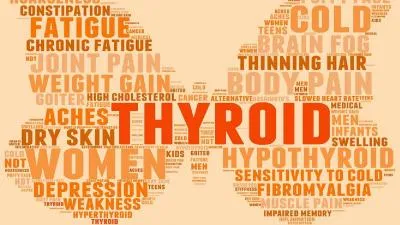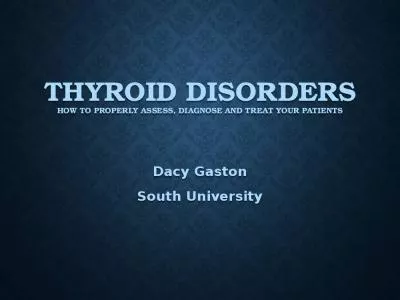PPT-Pituitary, thyroid, adrenals, enzymes and metabolic disorders
Author : isabella | Published Date : 2023-11-18
Chem Path 2 Dr Vlad Makeev The purpose of this talk Give you an overview of the important topics regarding to some not all of chemical pathology Revise some basic
Presentation Embed Code
Download Presentation
Download Presentation The PPT/PDF document "Pituitary, thyroid, adrenals, enzymes an..." is the property of its rightful owner. Permission is granted to download and print the materials on this website for personal, non-commercial use only, and to display it on your personal computer provided you do not modify the materials and that you retain all copyright notices contained in the materials. By downloading content from our website, you accept the terms of this agreement.
Pituitary, thyroid, adrenals, enzymes and metabolic disorders: Transcript
Download Rules Of Document
"Pituitary, thyroid, adrenals, enzymes and metabolic disorders"The content belongs to its owner. You may download and print it for personal use, without modification, and keep all copyright notices. By downloading, you agree to these terms.
Related Documents

